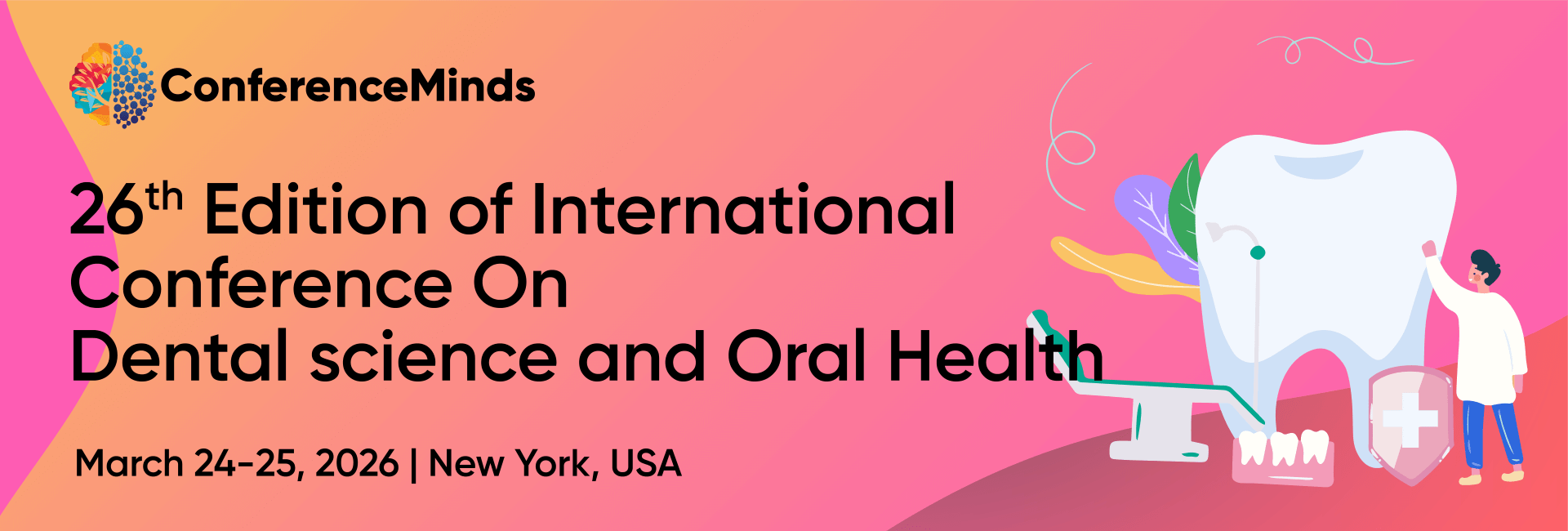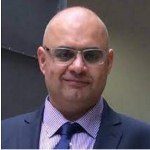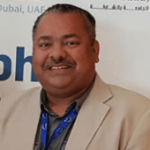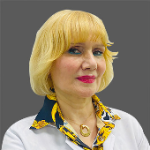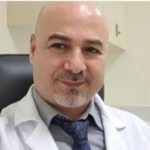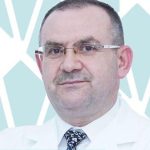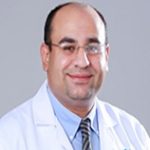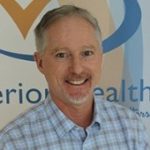Event Date
March 24-25, 2026
Venue
New York, USA
– Previous Conference Performers / Professionals From Around The Globe –
Media Partners/Collaborator
A huge thanks to all our amazing partners. We couldn’t have a conference without you!

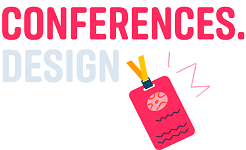





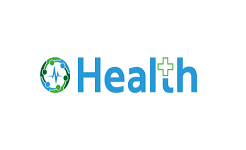
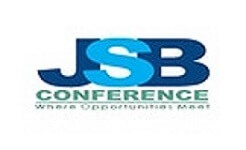

Sponsors/Exhibitors
A huge thanks to all our amazing partners. We couldn’t have a conference without you!


Dental Science 2026
The 26th Edition of the International Conference on Dental Science and Oral Health is a premier global event bringing together leading dental professionals, researchers, academicians, clinicians, and industry leaders to exchange knowledge, discuss innovations, and explore the latest advancements in dental science and oral healthcare. Held in the vibrant city of New York, USA, this two-day conference will serve as a dynamic platform for sharing cutting-edge research, best practices, and emerging technologies that are shaping the future of dentistry.
Theme: Sustainable Dentistry: Innovations for better Oral Heath
Participants will engage in keynote presentations, interactive sessions, panel discussions, poster presentations, and workshops across a range of topics in general dentistry, oral surgery, cosmetic dentistry, periodontology, dental implants, and more.
Conference Highlights:
-
Keynote Sessions by internationally renowned dental surgeons and researchers
-
Cutting-edge presentations on topics such as implantology, cosmetic dentistry, regenerative techniques, craniofacial surgery, and digital dentistry
-
Hands-on workshops and interactive panel discussions
-
Case study presentations, innovative techniques, and clinical trials
-
Networking opportunities with peers, industry leaders, and technology innovators
Conference Objectives
-
Showcase Cutting-Edge Surgical Techniques:
Present the latest techniques and technologies in maxillofacial surgery, including innovations in oral and facial reconstruction, implantology, and minimally invasive procedures. -
Promote Collaborative Learning:
Foster collaboration between dentists, oral surgeons, maxillofacial specialists, and researchers to enhance knowledge and improve patient care. -
Explore Technological Advancements:
Discuss the role of digital technologies, robot-assisted surgery, 3D imaging, and biomaterials in enhancing surgical outcomes and streamlining clinical workflows. -
Address Challenges in Aesthetic Surgery:
Focus on advancements in facial aesthetics and cosmetic surgery, exploring new techniques for improving outcomes in both functional and aesthetic treatments.
Conference Benefits
-
Cutting-Edge Research and Techniques: Discover the latest advancements in oral and maxillofacial surgery, focusing on the integration of new surgical technologies and innovative treatment approaches.
-
Hands-On Workshops: Participate in practical sessions designed to provide hands-on experience with the newest surgical tools and techniques, enhancing your clinical skills.
-
Networking Opportunities: Connect with top professionals in dental science and maxillofacial surgery, fostering potential collaborations and expanding your professional network.
-
Insights into Emerging Trends: Learn about the future of maxillofacial surgery, including emerging trends in robotics, digital planning, and biomaterials for better patient outcomes.
Who should attend and Benefits
- Healthcare Professionals: Dentists, dental surgeons, and other healthcare professionals in the field of dentistry can benefit from the latest research, advancements, and practical insights shared during the conference. It provides a platform for networking and staying updated on industry trends.
- Dental Hygienists: Professionals responsible for preventive oral care, dental cleanings, and patient education can gain valuable knowledge about new techniques, tools, and best practices in oral health maintenance.
- Academicians: Scholars and educators in the field of dentistry can attend to stay abreast of the latest research, teaching methodologies, and educational trends. It’s an opportunity to connect with peers and enhance their teaching approaches.
- Oral Care Experts: Professionals specializing in specific areas of oral care, such as orthodontics, periodontics, or oral surgery, can find the conference a platform for sharing expertise, learning about advancements in their respective fields, and expanding their professional network.
- Scientists and Researchers: Those involved in dental research can showcase their work, exchange ideas with peers, and discover new avenues for collaboration. The conference provides a fertile ground for the dissemination of groundbreaking research findings.
Benefits of Dental Conference
- Knowledge Exchange: The conference facilitates the exchange of cutting-edge research, clinical practices, and advancements in the field of dentistry. Attendees can gain insights into the latest techniques, technologies, and treatment modalities.
- Networking Opportunities: It offers a unique platform for attendees to connect with professionals from various corners of the dental industry. Networking can lead to collaborations, partnerships, and the sharing of experiences and best practices.
- Professional Development: For healthcare professionals, dental hygienists, and academicians, the conference serves as a hub for continuous learning. Workshops, presentations, and discussions contribute to ongoing professional development and skill enhancement.
- Multidisciplinary Collaboration: Bringing together professionals from different dental specialties fosters a multidisciplinary approach to oral healthcare. Collaborative efforts can result in comprehensive and integrated solutions for patient care.
- Awareness and Understanding: By attending the conference, participants contribute to raising awareness and understanding in the discipline of dentistry. It promotes a broader perspective on oral health issues and encourages a proactive approach to addressing challenges in the field.
- Evidence-Based Dentistry: The emphasis on clinical research and evidence-based practices encourages practitioners to contribute to the establishment of a robust foundation for dental decision-making. This scientific approach enhances the quality of patient care.
- Exposure to Industry Trends: The conference provides a firsthand look at emerging trends, technologies, and innovations in dentistry. This exposure helps attendees stay ahead in a rapidly evolving field.
Sessions and Tracks
Track 1: Dentistry
- Preventive Dentistry: Techniques and practices for preventing oral diseases.
- Restorative Dentistry: Treatments to restore damaged or missing teeth.
- Periodontal Care: Management of gum diseases and conditions.
- Prosthodontics: Design and fitting of dental prostheses.
- Oral Pathology: Diagnosis and management of oral diseases.
Track 2: Oral Health
- Oral Health Education: Strategies for educating patients and communities.
- Disease Prevention: Methods to prevent common oral diseases.
- Community Oral Health: Public health initiatives and outreach programs.
- Oral Health Promotion: Campaigns and strategies to improve oral health.
- Clinical Oral Health Practice: Clinical techniques and practices in oral health therapy.
Track 3: Tele Dentistry
- Remote Diagnosis: Techniques and tools for diagnosing oral conditions remotely.
- Virtual Consultations: Best practices for conducting online dental consultations.
- Digital Record Keeping: Methods for managing patient records digitally.
- Tele Dentistry Platforms: Overview of different tele dentistry platforms and technologies.
- Patient Engagement: Strategies for maintaining patient interaction through tele dentistry.
Track 4: Oral & Maxillofacial Surgery
- Tooth Extraction: Techniques and considerations for removing teeth.
- Dental Implants: Placement and management of dental implants.
- Orthognathic Surgery: Procedures to correct jaw and facial bone irregularities.
- Facial Trauma Surgery: Management of injuries to the face and jaw.
- Reconstructive Surgery: Techniques for reconstructing facial and oral structures.
Track 5: Forensic Dentistry & Anthropology
- Identification Through Dental Records: Methods for identifying individuals using dental records.
- Disaster Victim Identification: Techniques used in large-scale catastrophes.
- Skeletal Analysis: Examination of skeletal remains for forensic purposes.
- Dental Age Estimation: Methods for estimating age based on dental analysis.
- Anthropological Research: Application of dental analysis in understanding human evolution.
Track 6: Conservative & Restorative Dentistry
- Caries Management: Approaches to preventing and treating dental caries.
- Restorative Materials: Innovations in materials used for dental restorations.
- Endodontics: Advanced techniques in root canal therapy.
- Conservative Techniques: Minimally invasive approaches to preserving teeth.
- Restorative Procedures: Common procedures for restoring tooth function and appearance.
Track 7: Genetics in Oral Health
- Genetic Predisposition to Oral Diseases: Research on hereditary factors influencing oral health.
- Genetic Testing: Emerging genetic tests for oral health conditions.
- Gene Therapy: Potential applications of gene therapy in dentistry.
- Hereditary Oral Conditions: Study of genetic disorders affecting oral health.
- Genetics and Oral Cancer: Exploring genetic factors in the development of oral cancers.
Track 8: Cancer Care Dentistry
- Oral Cancer Diagnosis: Techniques for detecting oral cancers.
- Treatment Planning: Strategies for integrating dental care with oncology treatments.
- Managing Radiation Effects: Care strategies for patients undergoing radiation therapy.
- Chemotherapy-related Oral Care: Addressing oral health issues related to chemotherapy.
- Innovative Treatments: Research on new treatments and therapies for oral cancer.
Track 9: Dental & Tooth Anatomy
- Tooth Structure: Detailed study of tooth components and their functions.
- Oral Cavity Anatomy: Anatomy of the oral cavity and its relevance to dental procedures.
- Maxillofacial Anatomy: Study of facial bones and structures.
- Dental Histology: Microscopic examination of dental tissues.
- Developmental Anatomy: Understanding the development of dental and oral structures.
Track 10: Orthodontics & Dentofacial Orthopedics
- Braces and Aligners: Different types of orthodontic appliances.
- Facial Growth and Development: Understanding and managing facial growth.
- Orthodontic Treatment Planning: Strategies for planning and executing orthodontic treatments.
- Corrective Appliances: Use of appliances for correcting dental and facial issues.
- Post-Treatment Care: Managing care and maintenance after orthodontic treatment.
Track 11: Pediatric Dental Health
- Behavior Management: Techniques for managing young patients during dental visits.
- Developmental Monitoring: Tracking dental development in children and adolescents.
- Preventive Care: Strategies for preventing dental issues in young patients.
- Caries Management in Children: Specific approaches for treating caries in pediatric patients.
- Parental Education: Educating parents on maintaining children’s oral health.
Track 12: Geriatric Dental Health
- Age-related Oral Health Issues: Common dental problems in older adults.
- Multidisciplinary Care: Coordinating dental care with other healthcare needs in the elderly.
- Prosthetics for Elderly: Designing and fitting prosthetics for older patients.
- Oral Health and Systemic Diseases: Interconnections between oral health and overall health in aging.
- Dental Care Accessibility: Improving access to dental care for elderly populations.
Track 13: Periodontics & Endodontics
- Gum Disease Management: Treatments for various forms of periodontal disease.
- Scaling and Root Planing: Procedures for deep cleaning of the teeth and gums.
- Advanced Endodontics: Techniques and technologies in root canal therapy.
- Periodontal Surgery: Surgical approaches to treating advanced gum disease.
- Endodontic Retreatment: Strategies for managing failed root canal treatments.
Track 14: Hypodontias & Prosthodontics
- Diagnosis of Hypodontia: Identifying and diagnosing missing teeth due to hypodontia.
- Prosthetic Planning: Planning and fitting prosthetics for missing teeth.
- Fixed vs. Removable Prostheses: Comparing different types of dental prostheses.
- Implant-Retained Prostheses: Using implants to support prosthetic teeth.
- Aesthetic Considerations: Enhancing the appearance of prosthetic solutions.
Track 15: Dental Nursing & Care
- Clinical Assistance: Supporting dentists during various procedures.
- Patient Care Management: Ensuring patient comfort and safety.
- Sterilization Protocols: Maintaining infection control and sterilization standards.
- Dental Emergencies: Handling urgent dental care situations.
- Administrative Tasks: Managing patient records and appointment scheduling.
Track 16: Dental Surgery & Treatment
- Exodontia: Extraction of teeth and related procedures.
- Oral Surgical Techniques: Advanced techniques in oral surgery.
- Minimally Invasive Surgery: Approaches to reduce recovery time and complications.
- Sedation and Anesthesia: Managing patient comfort during surgical procedures.
- Postoperative Care: Care and follow-up after dental surgery.
Track 17: Dental Implant & Instrumentation
- Implant Placement: Techniques for placing dental implants.
- Implant Maintenance: Care and maintenance of dental implants.
- Implant Complications: Managing issues such as peri-implantitis.
- Instrumentation Technology: Innovations in dental tools and equipment.
- Bone Grafting: Procedures to support implant placement.
Track 18: Cosmetic & Nano Dentistry
- Teeth Whitening: Techniques and products for improving tooth color.
- Veneers and Bonding: Cosmetic procedures to enhance tooth appearance.
- Nano-Enhanced Materials: Use of nanotechnology in dental materials.
- Smile Design: Comprehensive approaches to improving smile aesthetics.
- Digital Smile Design: Utilizing digital tools for planning cosmetic treatments.
Track 19: Dental Nutrition
- Nutritional Impact on Oral Health: How diet affects dental health.
- Dietary Recommendations: Advising patients on diets that promote oral health.
- Genetic Influences on Diet: Research on how genetics affect dietary habits.
- Oral Health and Metabolism: Understanding the relationship between metabolism and oral health.
- Nutritional Supplements: Evaluating the role of supplements in oral health.
Track 20: Dental Marketing
- Online Marketing Strategies: Utilizing digital platforms for dental practice promotion.
- Patient Engagement: Techniques for engaging patients through marketing.
- Brand Development: Building and maintaining a dental practice brand.
- Social Media Management: Leveraging social media for patient outreach.
- Marketing Analytics: Measuring the effectiveness of marketing efforts.
Track 21: Dental Public Health & Epidemiology
- Population-Based Oral Health Strategies: Approaches to improving community dental health.
- Dental Caries Epidemiology: Studying the prevalence and impact of dental caries.
- Oral Health Policy: Developing and implementing public health policies.
- Disease Surveillance: Monitoring and reporting on oral health trends.
- Health Promotion Campaigns: Designing campaigns to promote oral health at the population level.
Track 22: Dental Biomaterial & Modeling
- Biomaterial Innovations: Advancements in materials used for dental treatments.
- Additive Manufacturing: Use of 3D printing in dental applications.
- Biofabrication Techniques: Methods for creating biological tissues and structures.
- Material Testing: Evaluating the performance of dental biomaterials.
- Regenerative Dentistry: Exploring techniques for regenerating dental tissues.
Track 23: Denture Care & Maintenance
- Denture Cleaning: Proper methods for cleaning dentures.
- Repair and Adjustment: Techniques for repairing and adjusting dentures.
- Patient Education: Teaching patients about denture care and maintenance.
- Denture Fit and Comfort: Ensuring proper fit and comfort of dentures.
- Long-Term Maintenance: Strategies for maintaining denture health over time.
Track 24: Dental Clinical Research & Education
- Biotechnological Tools: Utilizing modern technology in dental research.
- Clinical Trials: Conducting and evaluating clinical trials in dentistry.
- Educational Innovations: New approaches in dental education and training.
- Research Methodologies: Techniques and methods used in dental research.
- Continuing Education: Opportunities for ongoing professional development in dentistry.
Track 25: Amalgam Separators & Waste Management
- Amalgam Separator Technologies: Devices and techniques for handling amalgam waste.
- Waste Disposal Regulations: Compliance with environmental regulations for dental waste.
- Best Management Practices: Implementing best practices for waste management in dental settings.
- Chair-Side Traps: Equipment for capturing amalgam waste at the chairside.
- Routine Inspections: Conducting inspections and maintenance of waste management systems.
Track 26: Infection Control & Sterilization
- Sterilization Protocols: Best practices for sterilizing dental instruments.
- Infection Control Procedures: Measures to prevent infection in dental settings.
- Monitoring Sterilizers: Techniques for ensuring sterilizer effectiveness.
- Personal Protective Equipment: Use of PPE to protect dental staff and patients.
- Disinfection Practices: Methods for disinfecting dental equipment and surfaces.
Track 27: Dental Sleep Medicine
- Oral Appliances for Sleep Apnea: Using oral devices to manage obstructive sleep apnea.
- Sleep Disorder Diagnosis: Techniques for diagnosing sleep disorders related to dental issues.
- Treatment for Snoring: Approaches to managing and reducing snoring.
- Patient Safety and Compliance: Ensuring the safe use of dental sleep appliances.
- Multidisciplinary Care: Collaborating with other healthcare professionals for comprehensive sleep care.
Market Analysis
Market Trends:
- Increasing Demand for Continuing Education: With rapid advancements in dental technology, practitioners are seeking continuous education opportunities. The conference aligns with this trend, offering a platform for dental professionals to stay updated on the latest techniques, research findings, and industry trends.
- Globalization of Dental Practices: The event’s international scope attracts participants from around the world. This globalization mirrors the trend of dental practices expanding beyond local boundaries, fostering cross-cultural exchange of knowledge and practices.
- Emphasis on Evidence-Based Dentistry: The growing emphasis on evidence-based dentistry is evident in the conference’s focus on clinical research. Healthcare professionals are increasingly inclined towards practices grounded in scientific evidence, and this conference addresses that need.
- Technological Innovations in Dentistry: The market analysis indicates a surge in interest and investment in dental technologies. The conference serves as a platform for companies and professionals to showcase and explore the latest innovations, creating synergies between technological advancements and dental practice.
Market Drivers:
- Professional Networking Opportunities: The dental conference offers unparalleled networking opportunities, attracting participants eager to connect with industry peers, potential collaborators, and experts in various dental specialties. Networking is a critical driver for professional growth and business development.
- Industry Collaboration: The multidisciplinary nature of the conference fosters collaboration between professionals from different dental specialties. This collaborative approach is becoming increasingly crucial for comprehensive patient care, driving interest in the conference.
- Growing Oral Health Awareness: The rising awareness of the importance of oral health contributes to the market’s growth. As individuals become more conscious of maintaining good oral hygiene, dental professionals and researchers are eager to participate in events that contribute to this awareness.
About Venue
New York, USA
Renowned as one of the most iconic cities in the world, New York City offers an exceptional backdrop for the 26th Edition of the International Conference on Dental Science and Oral Health. A global hub of innovation, education, and culture, New York is the ideal destination for an international gathering of dental professionals.
From the towering skyscrapers of Manhattan to the historical landmarks, world-class museums, and vibrant culinary scene, the city provides an inspiring environment for learning and networking. With easy access through major international airports, convenient public transportation, and a wide range of accommodation options, New York ensures a seamless and enjoyable experience for all attendees.
In addition to participating in enriching conference sessions, delegates will have the opportunity to explore famous attractions such as:
- Times Square
- Central Park
- The Statue of Liberty
- Empire State Building
- The Metropolitan Museum of Art
- Broadway theaters
- And much more
– Tracks & Key Topics –
- Recent Advances in Dental Technology
- Innovations in Oral Surgery
- Periodontal Disease: Diagnosis and Treatment
- Pediatric Dentistry: Best Practices
- Orthodontics: Emerging Trends
- Prosthodontics: Restoring Smiles
- Digital Dentistry: From Imaging to Treatment
- Oral Cancer Research and Therapies
- Preventive Dentistry: Beyond Brushing and Flossing
- Geriatric Dentistry: Challenges and Solutions
- Endodontics: Root Canal Therapy Updates
- Maxillofacial Trauma Management
- Dental Implantology: Current Protocols
- Telehealth in Dentistry
- Holistic Approaches to Oral Health
- Aesthetic Dentistry: Art and Science
- Ethical Considerations in Dental Practice
- Public Health Dentistry Initiatives
- Dental Education and Training Strategies
- Nutrition and its Impact on Oral Health
- Infection Control in Dental Settings
- Dental Materials: Innovations and Safety
- Dental Radiology: Advancements and Applications
- Dental Practice Management in the Digital Age
- Craniofacial Anomalies: Treatment Modalities
- Dental Anxiety and Phobia: Patient Management
- Teledentistry: Remote Consultations
- Dental Ethics in the Age of Technology
- Emerging Paradigms in Dental Research
- Cleft Lip and Palate: Multidisciplinary Approaches
- Community Outreach in Dentistry
- Dental Public Policy and Advocacy
- Sports Dentistry: Protecting Athletes’ Smiles
- Oral Microbiome: Implications for Health
- Dental Sleep Medicine: Beyond Snoring
- The Role of Artificial Intelligence in Dentistry
- Ergonomics in Dental Practice
- Regenerative Dentistry: Tissue Engineering
- Dental Emergency Management
- Cultural Competence in Dental Care
- Forensic Dentistry: Identifying the Unidentified
- Dental Tourism: Opportunities and Challenges
- Oral Health Disparities: Bridging the Gap
- Gerodontology: Aging and Oral Health
- Dental Ergonomics and Occupational Health
- Laser Dentistry: Applications and Safety
- Dental Bioinformatics and Big Data
- Virtual Reality in Dental Education
- Dental Robotics: Automation in Practice
- Interdisciplinary Collaboration in Comprehensive Patient Care

